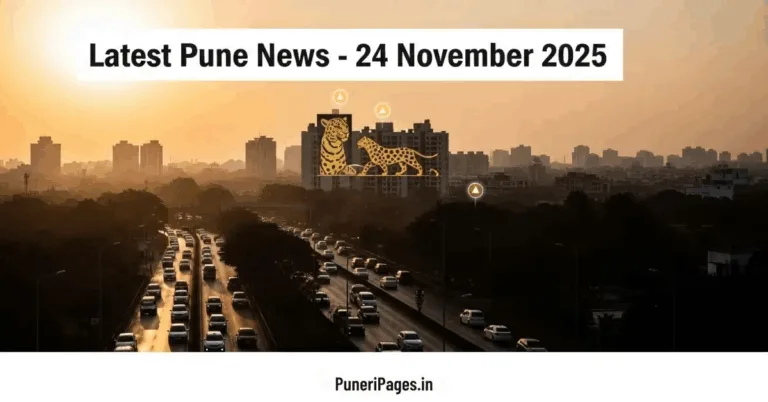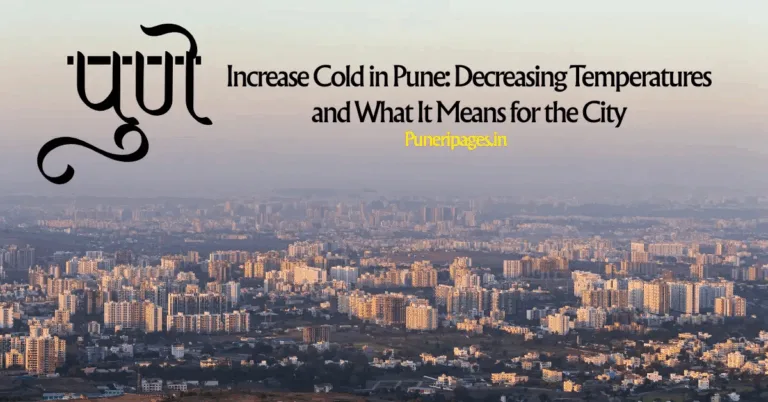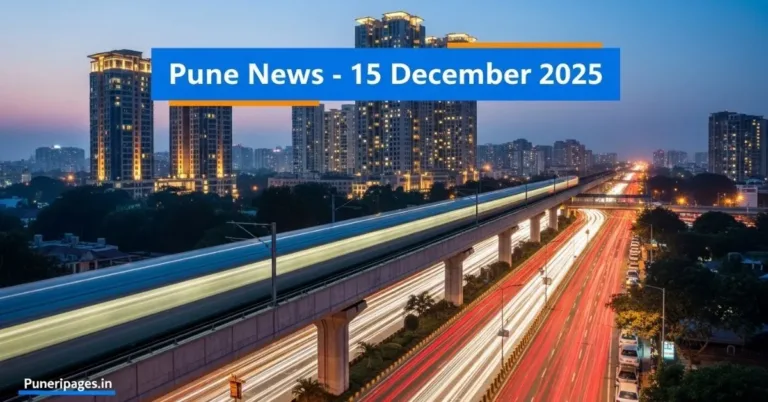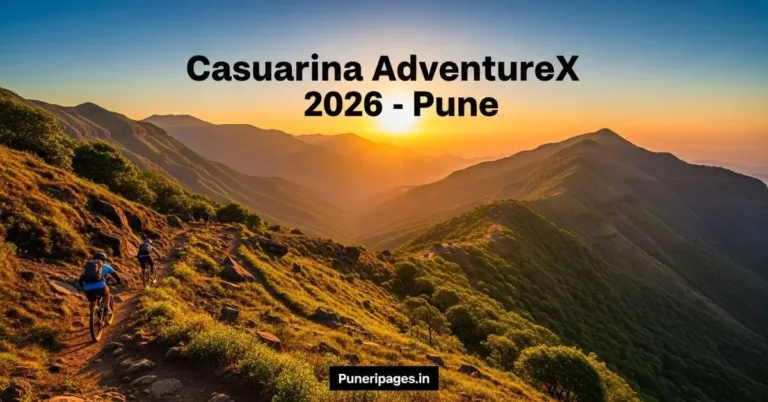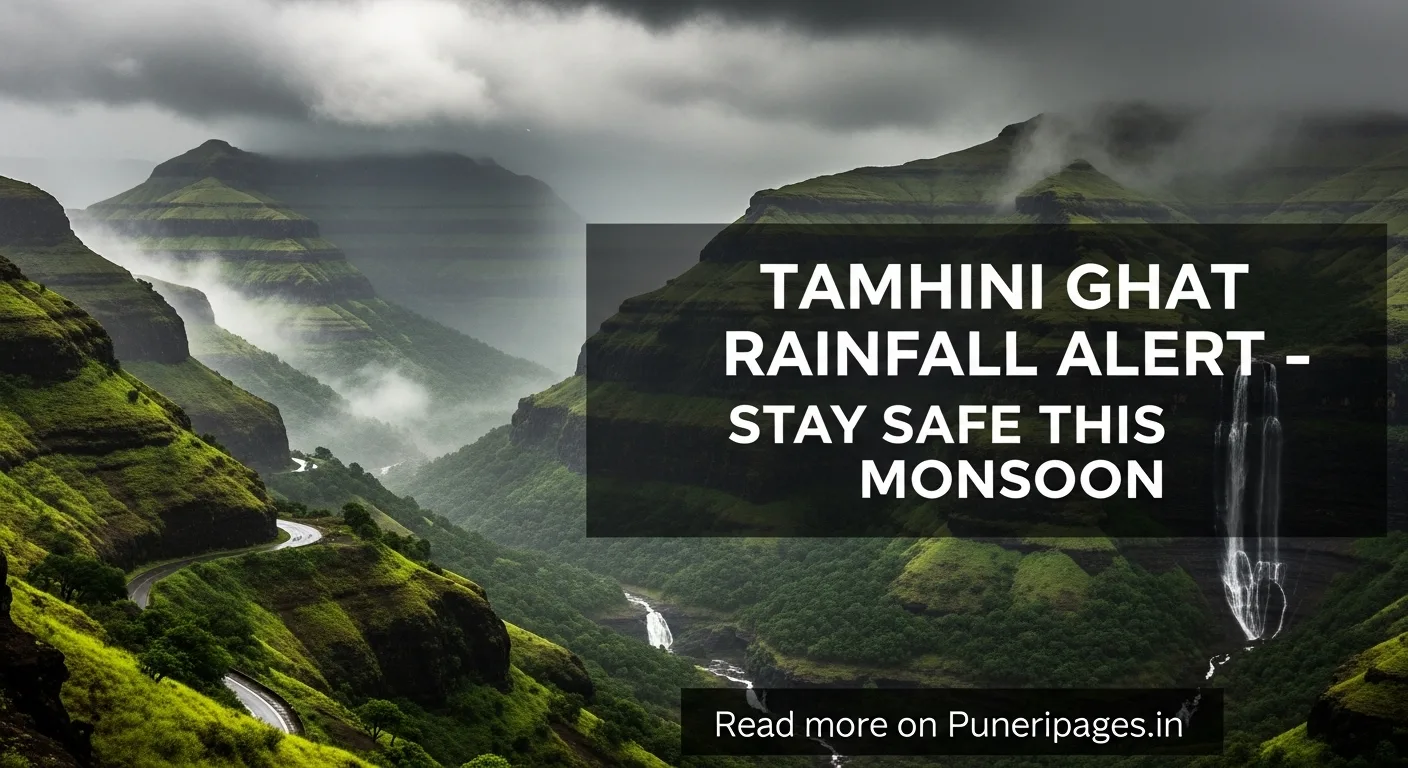
Tamhini Ghat sees intense monsoon rainfall, alert issued by IMD. Visit puneripages.in for updates.
By Prashant for PuneriPages.in
While Pune city experiences its routine monsoon showers, something far more extraordinary is unfolding just a few hours away in the Western Ghats. Tamhini Ghat, already known for its lush landscapes and cascading waterfalls, has now recorded over 5000 mm of rainfall this season. To put that in perspective, that’s more than seven times Pune’s annual rainfall and places Tamhini in the same league as India’s legendary rain zones like Cherrapunji.
This staggering milestone is not just a testament to the power of nature—it’s also a serious public safety warning. The India Meteorological Department (IMD) has issued a heavy to very heavy rainfall alert for all ghat areas, including Tamhini.
Table of Contents
🚨 TRAVEL ADVISORY: THINK TWICE BEFORE YOU GO
According to the IMD, the ghat regions are at high risk due to continuous and intense rainfall. Here’s what travelers must be aware of:
The Real Dangers:
- ⚠️ High Risk of Landslides and Rockfalls: Saturated soils and persistent rains make the hills dangerously unstable.
- ⚠️ Zero Visibility: Fog and torrential rains can reduce visibility to just a few feet, especially around curves and turns.
- ⚠️ Overflowing Streams and Waterfalls: Roads can turn into rivers in minutes, making even short drives life-threatening.
- ⚠️ Sudden Road Closures: Authorities often block access without notice due to dangerous conditions, which can leave travelers stranded.
✨ The Beauty and the Beast
Tamhini in the monsoon is nothing short of cinematic. Picture this: velvety green mountains, hundreds of waterfalls crashing down rock faces, and a constant orchestra of wind and water. It’s a landscape photographer’s dream and a nature lover’s paradise.
But here’s the truth: this paradise hides real peril. The same waterfall you admire from afar could, within minutes, swell and cut off the road entirely. Mist can mask dangerous turns. What looks like a calm stream may carry enough force to sweep away a vehicle.
📊 SAFETY CHECKLIST FOR ESSENTIAL TRAVEL
If you must use the Tamhini Ghat route, follow these precautions:
- Check Before You Go: Visit official traffic police or disaster management websites and social media for the latest updates.
- Travel Only in Daylight: Conditions can deteriorate quickly after dark.
- Vehicle Health is Crucial: Tires, brakes, lights, and wipers must be fully functional.
- No Risky Stops: Avoid parking under waterfalls or near landslide-prone cliffs.
- Tell Someone: Share your travel itinerary with a trusted person in case of emergency.
🌧️ Why Tamhini Gets So Much Rain: The Science
Tamhini lies in the Sahyadri range, a part of the Western Ghats, where moist winds from the Arabian Sea rise and cool rapidly over the mountains. This “orographic lift” causes the clouds to dump massive amounts of rain over the region, turning it into a monsoon magnet.
🔹 Final Thoughts
The Tamhini monsoon is a breathtaking reminder of nature’s power. But it’s also a force that commands respect. If you’re considering a scenic weekend escape, think again. With the IMD’s warnings and nature showing no signs of slowing down, the safest option right now is to stay informed, stay safe, and admire the storm from a distance.
Let the monsoon giant roar—just don’t be caught in its path.
